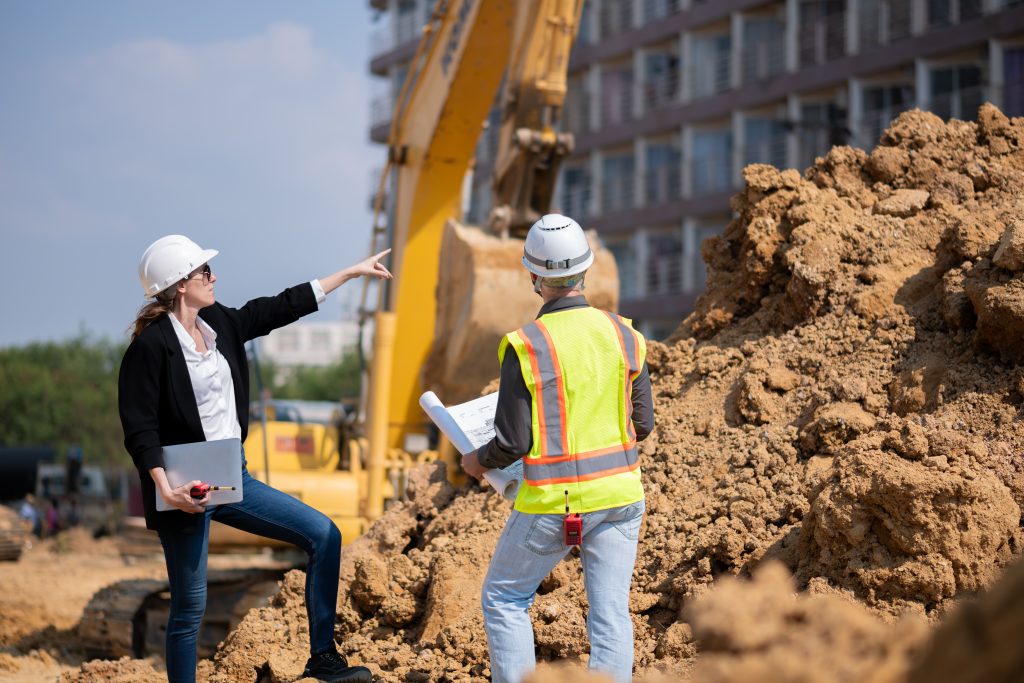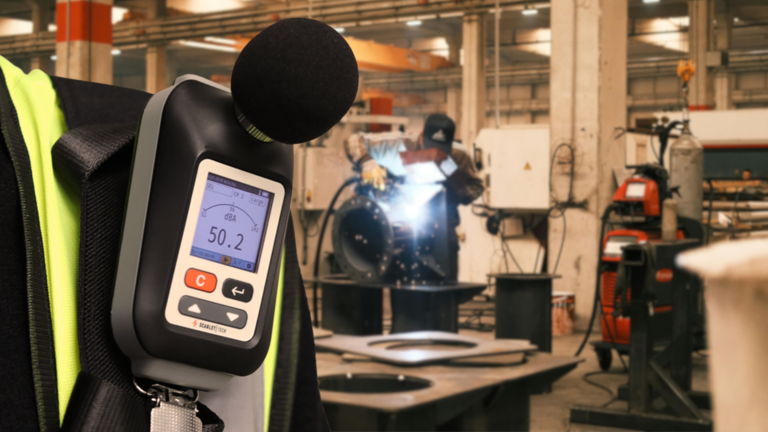Understanding the OSHA Noise Standard: Purpose and Coverage
OSHA regulates workplace noise because prolonged exposure to loud machinery can damage the delicate hair cells in the inner ear, leading to permanent hearing loss and chronic ringing. Its legal muscle is 29 CFR 1910.95, which caps an eight-hour shift at 90 dBA and says employers must start a hearing-conservation program once exposures hit 85 dBA. The rule most affects workers in construction, manufacturing, aviation, and transportation, where noise levels often exceed OSHA limits. By enforcing the OSHA noise standard, the agency cuts one of the most common job-related illnesses and keeps workers’ hearing well throughout their careers.
Exposure Thresholds: PEL, Action Level, and Exchange Rate
- Permissible Exposure Limit (PEL): Under the OSHA noise standard, the permissible exposure limit is 90 dBA averaged over an eight-hour workday. That 90 dBA equals a 100% noise dose and stands as the legal ceiling for routine exposure.
- Action Level: An action level of 85 dBA TWA compels employers to launch a hearing-conservation program. Once this threshold is crossed, monitoring, audiometry, training, and ready access to hearing protection all become mandatory.
- 5-dB Exchange Rate: The OSHA noise standard also relies on a 5-dB exchange rate. It implies that every 5 dB rise cuts the allowable exposure time by half.
- Practical Time Limits: Under this rule, workers may be exposed to 90 dBA for 8 hours, 95 dBA for 4 hours, and 100 dBA for 2 hours, with allowable time halving as noise levels increase.
- Peak Sound Pressure Limit: For impulsive or impact sounds, OSHA sets an absolute peak cap of 140 dB. This limit applies no matter how brief the blast might be.
What Are OSHA Decibel Limits?
OSHA defines specific limits for occupational noise exposure to protect workers’ hearing. Here’s a quick breakdown:
| Noise Level (dBA) | Max Exposure Time | Example Source |
| 85 dBA (Action Level) | – | Loud traffic inside a car |
| 90 dBA (PEL) | 8 hours | Shouted conversation |
| 95 dBA | 4 hours | Electric drill, forklift area |
| 100 dBA | 2 hours | Chainsaw, pneumatic drill |
| 140 dB (Peak Limit) | Impulse only | Gunshot, explosive impact |
Keep in mind that these OSHA noise exposure limits are based on an exchange rate of 5 dB, which implies that each 5 dB increase decreases the permissible exposure time by half.
Hearing Conservation Program: When and What It Includes

Trigger Point
Under the OSHA noise standard, a hearing conservation program kicks in whenever any employee’s exposure reaches or exceeds 85 dBA as an eight-hour time-weighted average, the so-called action level. It applies even to workers who hit the threshold only occasionally.
Key Program Components
Once employee noise exposure reaches the 85 dBA action level, OSHA requires employers to implement a hearing conservation program. The program includes several core elements designed to monitor risks, protect workers, and ensure long-term compliance.
- Noise Monitoring: Conduct initial surveys to identify at-risk employees and follow-up checks whenever equipment, processes, or staffing change to keep exposure data current.
- Audiometric Testing: Provide a baseline audiogram within six months of a qualifying exposure (or one year with a mobile van) and annual audiograms thereafter to detect early hearing shifts and trigger corrective action.
- Hearing Protection: Supply properly rated earplugs or earmuffs at no cost, ensure correct fitting and replacement, and apply engineering or administrative controls first whenever feasible.
- Training: Deliver annual training that explains noise hazards, audiogram results, correct use of hearing protection, and the importance of reporting hearing concerns.
- Recordkeeping: Retain exposure measurements for at least two years, audiometric and training records for the duration of employment, and documentation of protector ratings and calibration to verify long-term compliance.
Control Strategies and Measurement Tools
Hierarchy of Controls
To reduce workplace noise exposure, OSHA emphasizes following the hierarchy of controls—prioritizing long-term solutions over temporary fixes. The main strategies include:
- Engineering Controls: Reduce noise at the source by investing in quieter machines, enclosing equipment, or installing sound barriers.
- Administrative Controls: Limit exposure by adjusting schedules, rotating crews, or reassigning tasks to shorten time spent in noisy areas.
- Personal Protective Equipment (PPE): Provide earplugs or earmuffs only after other methods are implemented, since PPE is considered the last line of defense.
Measuring the Sound
Accurate noise measurement is the foundation of effective hearing protection. Hand-held sound level meters provide quick spot readings, while integrating meters capture average levels over time. For a more complete picture, dosimeters are worn by workers to record full-shift exposures and calculate time-weighted averages. These tools allow employers to identify high-risk areas, verify control measures, and ensure employees are not unknowingly overexposed. While technology such as mobile apps and frequency analyzers can support initial screenings, reliable data always depends on well-calibrated, professional-grade instruments.
Why Accuracy Counts
Accurate data is essential for protecting workers and proving compliance. If measurements are off, employers may believe noise is under control while employees remain at risk. Regular calibration—both in the field and through scheduled lab checks—ensures instruments deliver trustworthy results. For dependable options that support precise monitoring, explore professional-grade sound level meters and dosimeters.
Aiming Beyond Compliance
While OSHA permits eight hours at 90 dBA with a 5-dB exchange rate, NIOSH recommends stricter limits—85 dBA with exposure time halved for every 3 dB increase. Following the NIOSH guideline offers an added margin of safety and promotes earlier adoption of noise controls that protect hearing at the source. To better understand how OSHA and NIOSH differ in their approaches, learn more about the key differences here.



